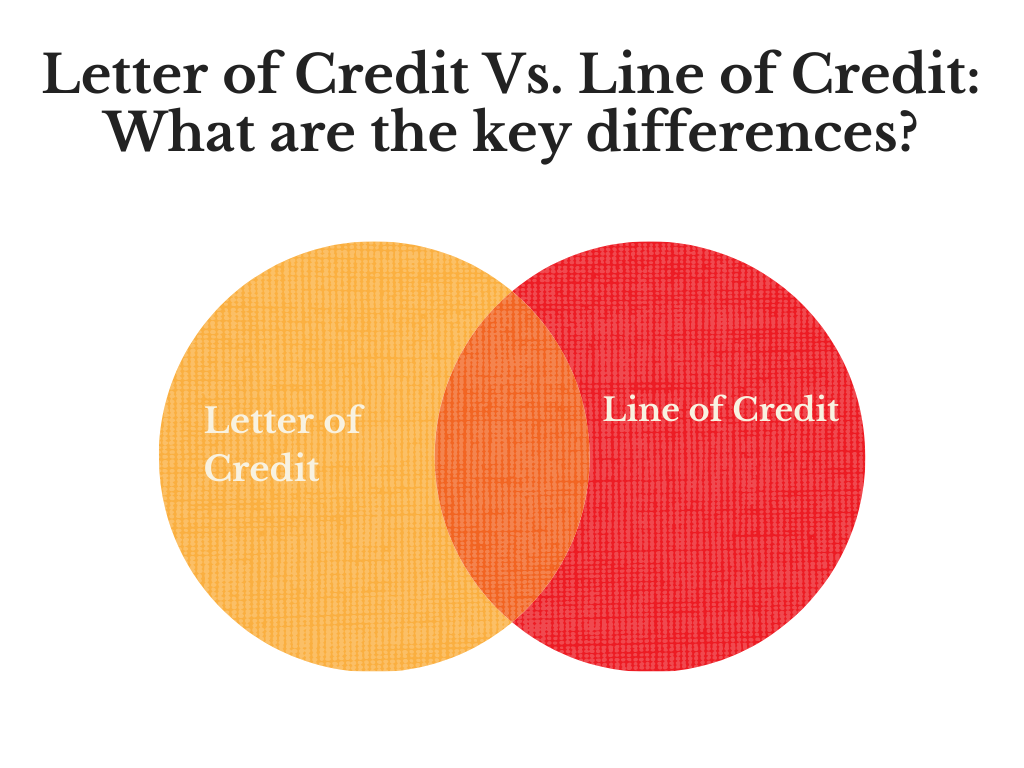Financial institutions provide many types of facilities to businesses. Among these facilities are the letter of credit and line of credit. While the names may sound similar, they are different facilities. Both of them have different structures.
Similarly, businesses use them for different purposes. They also span over different lengths of time. Businesses must know how each of these facilities differs from the others.

Letter of Credit
A letter of credit is a facility provided by financial institutions to companies in a non-monetary form.
A letter of credit is a guarantee of a financial institution to pay compensation for a transaction. The financial institution will provide this guarantee on behalf of a business.
Letters of credit are usually used by businesses when they want to purchase goods from another country. The time scope of a letter of credit facility depends on the time it takes to complete a transaction.
There are four parties involved in a letter of credit. The first party is the business that wants to buy goods from another business.
The second part is the business that wants to sell goods to the buyer business, usually in a foreign country. However, due to different reasons, they may not want to deal with each other directly.
Therefore, two other parties also get involved, are the financial institutions of both the buyer and seller businesses. These financial institutions are generally banks.
In a letter of credit, a buyer business contacts the seller business and sorts out the details of the transaction. Once both businesses agree on the details, the buyer business contacts its bank for the transaction.
The bank then contacts the bank of the seller’s business and guarantees them a payment on behalf of the buyer. Once the seller business delivers the goods involved in the transaction, the bank of the buyer business transfers the amount to the bank of the seller business.
Usually, the seller business will deliver the goods to a specified location. Furthermore, the banks will need documentation to confirm the delivery.
While businesses mainly use a letter of credit for foreign country transactions, they may also use it for domestic transactions. However, every transaction with a foreign business may not require a letter of credit.
Furthermore, financial institutions prove letters of credit to businesses rather than individuals. In a letter of credit, the financial institution providing the facility does not pay a business in monetary form.
The financial institutions of both businesses only act as a mediator for the transaction to go through. Both financial institutions will deduct service charges from the respective businesses.
Line of Credit
A line of credit, on the other hand, is a specific type of loan that financial institutions provide to businesses and individuals.
It is different from other types of loans as the borrower does not receive a lump sum amount of loan. The amount of loan is at the discretion of the borrower and is a variable amount loan.
At any time during the loan, the borrower can withdraw more loan or return a part of the loan. However, there is a set limit for the loan above which the borrower cannot withdraw. There may also be a lower limit to the loan.
Generally, for a borrower to obtain a line of credit facility, they must provide an asset as a security. Borrowers also need to pay an interest based on the loan amount that they have taken at the time of interest charge.
Line of credits are similar to debit or credit cards but a borrower can take a higher loan than is generally limited by credit card companies. Similarly, a line of credit is also riskier for the borrower as they have to provide an asset as a security.
Borrowers use lines of credit for short-term purposes. For example, individuals can use a line of credit to finance emergency expenses.
Individuals can also receive a line of credit against their home equity, known as Home Equity Line Of Credit (HELOC).
On the other hand, businesses may use a line of credit for working capital management needs. Similarly, they can use it to fund their cash flow needs.
Unlike a letter of credit, a line of credit does not involve any additional parties. It involves only two parties, the borrower and the financial institution providing the loan.
Similarly, with a line of credit, the borrower gets paid in monetary form. The use of the loan is at the discretion of the borrower.
Conclusion
Letter of credit and line of credit are two different facilities that financial institutions provide to borrowers.
Letter of credit is a guarantee that financial institutions provide on behalf of a business. Businesses use a letter of credit for transactions with foreign businesses.
This facility involves four parties which include the buyer and seller businesses and their respective banks.
Lines of credit are loans provided to both businesses and individuals. The amount and usage of the loan are at the discretion of the borrower.
